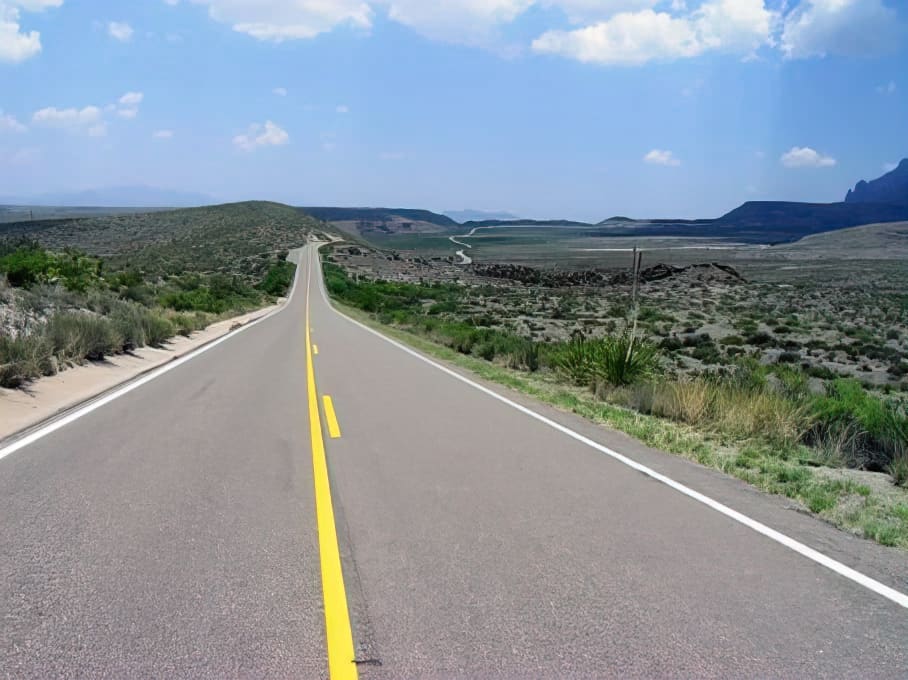To start things off, you should know that it’s not just the invention of the wheel that is moving forward. Nor are computing technologies, the automotive sector, or the healthcare industry the only things that are steadily progressing in time. Nowadays, pavement marking improvements and striping equipment innovations are also making strides to provide better visibility and safety for drivers.
In the past decade, pavement markings and striping technologies have advanced and changed. These advances and changes are significant for reducing confusion among road users, creating a safer environment for both pedestrians and vehicles, and reducing traffic congestion.
These days, almost everything we do in our everyday lives involves technology. It is all around us, from our smart devices to wireless networks and powerful computers. As a result, contractors may now finish tasks faster and with less downtime while also collecting vital data to assist owners in understanding previously unmeasurable business factors.
The Manual on Uniform Traffic Control Devices, which was issued on behalf of The U.S. Department of Transportation, places a high value on traffic safety. Clearly, visible pavement markings play an essential role in ensuring that cars and pedestrians stay in their lanes, even in bad weather. Paint and thermoplastic are the most popular traffic markings. Still, permanent traffic is increasingly becoming the preferred choice on busy roads due to its excellent visibility, especially at night and in the rain. Let’s take a look at the most common pavement marking advancements and striping technologies lately.
2D And 3D Pavement Markings For Roundabout Signage
Roundabout signage is an integral part of the safety system in a roundabout. The signs are used to guide motorists entering the roundabout, and they also provide advanced notice to drivers on the road approaching a roundabout.
The design of the signs for roundabouts must be carefully considered to enhance safety by providing adequate information to drivers approaching or within a roundabout. Roundabout pavement markings are used to guide drivers through the roundabout. The most common types of markings used in roundabouts are 2D and 3D.
2D Pavement Markings
2D pavement markings consist of white or yellow lines painted on the pavement. They may also be incorporated into other signage such as traffic signs or overhead signs. 2D markings can be used for a variety of applications including lane use and directional guidance.
3D Pavement Markings
3D pavement markings consist of raised markers that are laid over the road surface. These markers can be made out of various materials such as concrete, plastic, or rubberized asphalt. 3D markings provide greater visibility and durability than 2D markings because they cannot be worn down by car tires during regular use or weather conditions such as rain or snow.

Paintless Striping
This technology uses an airless paint sprayer to apply a line of paint directly onto the asphalt surface without any need for masking off areas or removing old markings. This process reduces the amount of time it takes to stripe a road from days down to hours, making it more efficient than traditional methods. It also eliminates the need for paint removal equipment; therefore, there is no need for solvent cleanup or disposal costs associated with traditional methods.
Electronic Traffic Control System
ETCS is a system that provides instant vehicle detection, vehicle classification, and speed control functions through cameras mounted above roadways along with sensors embedded in the roadway surface. ETCS can be used alongside other technologies like traffic light systems or variable speed limits so that they all work together seamlessly.
Pavement Markings That Use Data
The future of pavement markings will involve more than just paint and reflective material — it’ll also involve data collection and analytics tools that collect information about traffic patterns and vehicle movements to make our transportation system more efficient and safer for everyone who uses it every day. This could include installing traffic counters on the pavement or using cameras that capture images of license plates as cars pass by so city planners can analyze traffic patterns.
Pavement Marking Materials That Change Color
The days of white lines on yellow paint are numbered. Some cities are already using pavement markings that change color when exposed to heat or UV light. These thermochromic (TC) paints allow drivers to know exactly where they’re supposed to be at any given time — whether it’s a lane change or turn signal — which improves safety by reducing congestion and accidents.
Final Thoughts
New pavement marking and striping technologies promise to save time and money. This post is only a guideline for some of the advancements that have been developed over the years. These advancements will likely have a positive trickle-down effect that may improve the overall quality of work across the industry as a whole. And we’re just scratching the surface when it comes to what’s possible with technology like this. We can only imagine what asphalt markings and striping will look like in the years to come!

